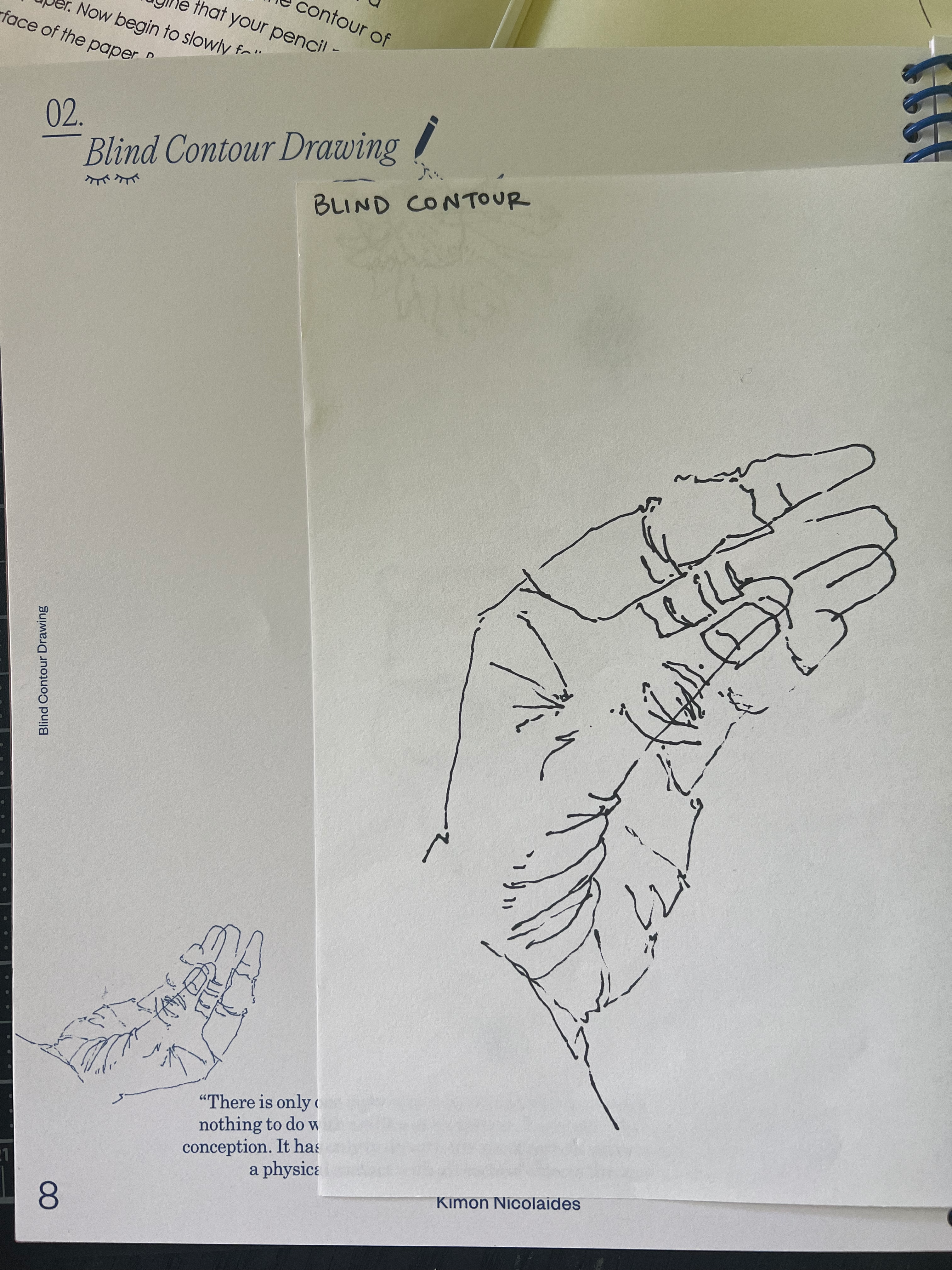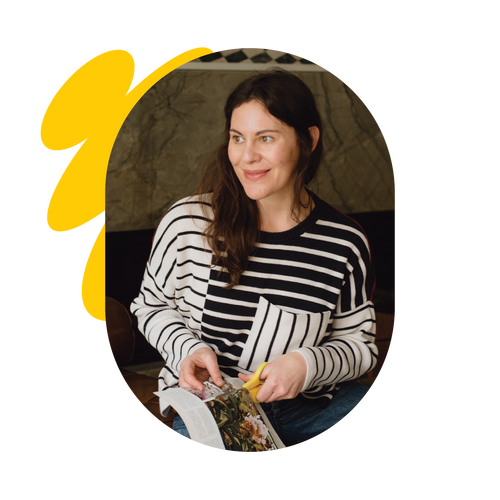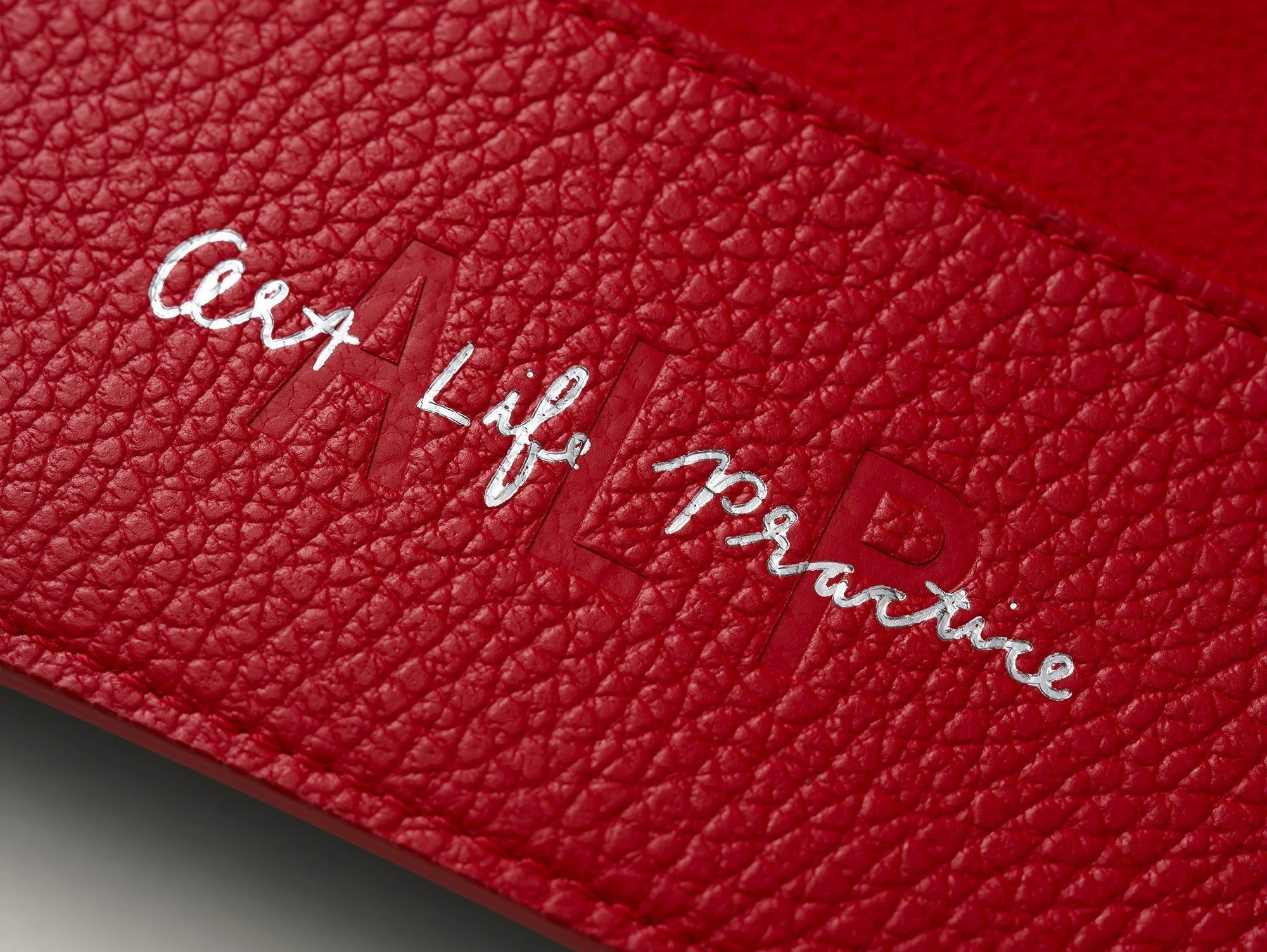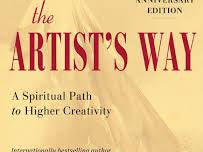Blind contour drawing is a drawing exercise that has been used by countless artists since its inception in the early 1940s. Art educator Kimon Nicolaïdes introduced the technique in his book, The Natural Way to Draw, claiming,
“There is only one right way to draw and that is a perfectly natural way. It has nothing to do with artifice or technique. It has nothing to do with aesthetics or conception. It has only to do with the act of correct observation, and by that I mean a physical contact with all sorts of objects through all the senses.”
Blind contour drawing means using your eyes to follow the contour of your subject with unbroken attention, so that the drawing tool carefully records the information that your eyes receive. Working this way, you do not look at the paper until the drawing is complete.
First, choose a subject. A few suggestions include: your non-dominant hand, a piece of fruit, shell, or flower. Focus your eye on some point of the subject, place your pencil on the paper and begin to slowly follow the contour of the subject across the surface of the paper without taking your eyes off of the subject and without picking up your pencil. Most importantly, make sure that your eye, hand, and mind are always working in unison!

Here are a few very adorable examples from when our founder Berry taught this exercise at Inner-City Arts:


A few of our favorite artists who have explored contour drawings throughout their career include Ellsworth Kelly, Alexander Calder (using wire!), and Henri Matisse.



Blind Contour Drawing is one of 25 Creative Exercises featured in our Guided Sketchbook!







